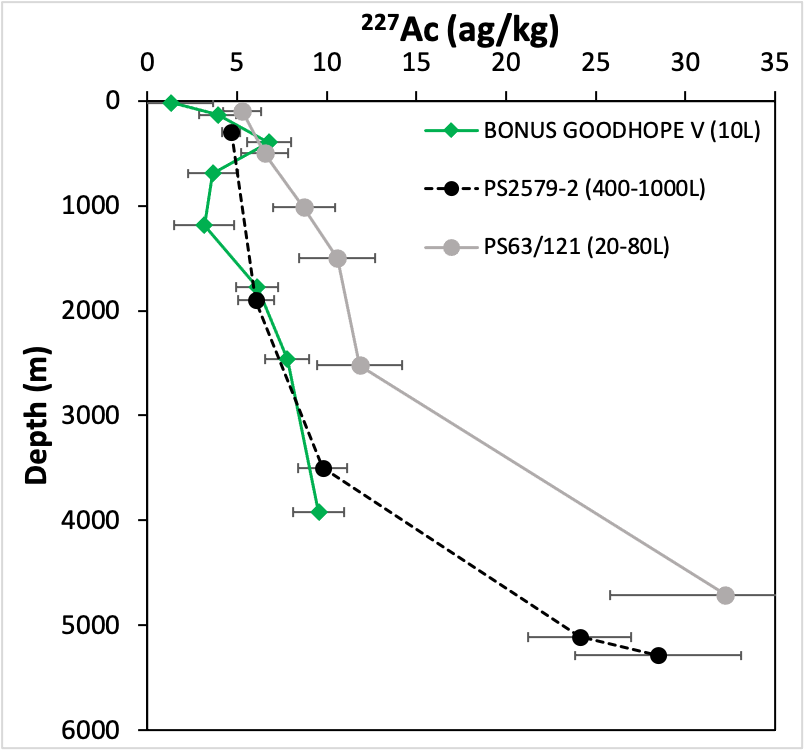Measuring actinium-227 by mass spectrometry is feasible, sensitive and reliable!
Actinium-227 (227Ac) is a radioelement (half-life = 22 y) produced in marine sediments by the decay of protactinium-231. 227Ac remobilization in the sediment is the main source of actinium to seawater. It makes of the 227Ac a good tracer of the process of remobilization from sediments and of the deep vertical mixing on decadal time scales. However, 227Ac was difficult to study until now because of its very low concentration in the environment, from 0 to 35 ag/kg (1ag = 10-18g) in seawater. Levier and co-authors (2021, see reference below) have developed a new protocol measurement of the dissolved actinium in seawater. This new measurement is by isotope dilution, chromatographic purification, and Multi-Collection Induced Coupled Mass Plasma Mass Spectrometry (ICPMS). The detection limit achieved with this method is around 1 ag/kg measured on samples of 10L of seawater. This new protocol was applied to archived samples from the Bonus GoodHope cruise (GIPY04) collected in 2008 in the Weddell Gyre. The resulting profile (see Figure) is consistent with previous data from the Weddell Gyre obtained by alpha spectrometry on 20-300 L seawater samples (Geibert and Vöge, 2008).

References:
Geibert, W., Vöge, I., 2008. Progress in the determination of 227Ac in sea water. Mar. Chem. 109, 238–249. https://doi.org/10.1016/j.marchem.2007.07.012
Levier, M., Roy-Barman, M., Colin, C., Dapoigny, A., 2021. Determination of low level of actinium 227 in seawater and freshwater by isotope dilution and mass spectrometry. Mar. Chem. 233, 103986. https://doi.org/10.1016/j.marchem.2021.103986
